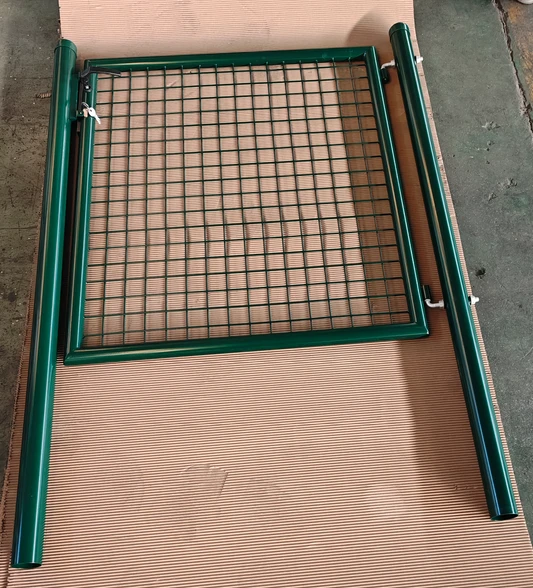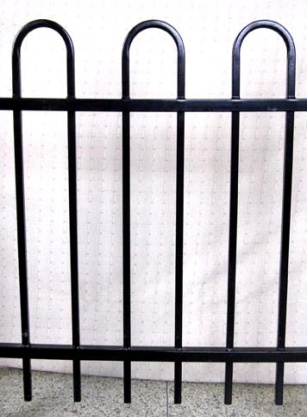-
Email:zhao@hyliec.cn
-
Tel:+86 311 85273988
-
WhatsAPP:8613931128750
-
 Afrikaans
Afrikaans -
 Albanian
Albanian -
 Amharic
Amharic -
 Arabic
Arabic -
 Armenian
Armenian -
 Azerbaijani
Azerbaijani -
 Basque
Basque -
 Belarusian
Belarusian -
 Bengali
Bengali -
 Bosnian
Bosnian -
 Bulgarian
Bulgarian -
 Catalan
Catalan -
 Cebuano
Cebuano -
 Corsican
Corsican -
 Croatian
Croatian -
 Czech
Czech -
 Danish
Danish -
 Dutch
Dutch -
 English
English -
 Esperanto
Esperanto -
 Estonian
Estonian -
 Finnish
Finnish -
 French
French -
 Frisian
Frisian -
 Galician
Galician -
 Georgian
Georgian -
 German
German -
 Greek
Greek -
 Gujarati
Gujarati -
 Haitian Creole
Haitian Creole -
 hausa
hausa -
 hawaiian
hawaiian -
 Hebrew
Hebrew -
 Hindi
Hindi -
 Miao
Miao -
 Hungarian
Hungarian -
 Icelandic
Icelandic -
 igbo
igbo -
 Indonesian
Indonesian -
 irish
irish -
 Italian
Italian -
 Japanese
Japanese -
 Javanese
Javanese -
 Kannada
Kannada -
 kazakh
kazakh -
 Khmer
Khmer -
 Rwandese
Rwandese -
 Korean
Korean -
 Kurdish
Kurdish -
 Kyrgyz
Kyrgyz -
 Lao
Lao -
 Latin
Latin -
 Latvian
Latvian -
 Lithuanian
Lithuanian -
 Luxembourgish
Luxembourgish -
 Macedonian
Macedonian -
 Malgashi
Malgashi -
 Malay
Malay -
 Malayalam
Malayalam -
 Maltese
Maltese -
 Maori
Maori -
 Marathi
Marathi -
 Mongolian
Mongolian -
 Myanmar
Myanmar -
 Nepali
Nepali -
 Norwegian
Norwegian -
 Norwegian
Norwegian -
 Occitan
Occitan -
 Pashto
Pashto -
 Persian
Persian -
 Polish
Polish -
 Portuguese
Portuguese -
 Punjabi
Punjabi -
 Romanian
Romanian -
 Russian
Russian -
 Samoan
Samoan -
 Scottish Gaelic
Scottish Gaelic -
 Serbian
Serbian -
 Sesotho
Sesotho -
 Shona
Shona -
 Sindhi
Sindhi -
 Sinhala
Sinhala -
 Slovak
Slovak -
 Slovenian
Slovenian -
 Somali
Somali -
 Spanish
Spanish -
 Sundanese
Sundanese -
 Swahili
Swahili -
 Swedish
Swedish -
 Tagalog
Tagalog -
 Tajik
Tajik -
 Tamil
Tamil -
 Tatar
Tatar -
 Telugu
Telugu -
 Thai
Thai -
 Turkish
Turkish -
 Turkmen
Turkmen -
 Ukrainian
Ukrainian -
 Urdu
Urdu -
 Uighur
Uighur -
 Uzbek
Uzbek -
 Vietnamese
Vietnamese -
 Welsh
Welsh -
 Bantu
Bantu -
 Yiddish
Yiddish -
 Yoruba
Yoruba -
 Zulu
Zulu
GI Hexagonal Wire Mesh - Durable & Rust-Resistant Fencing
- GI Hexagonal Wire Mesh: The Backbone of Modern Infrastructure
- Measuring Technical Advantages Through Data
- Price Variations Based on Technical Specifications
- Comparative Strengths: GI vs Stainless Steel Hexagonal Wire Mesh
- Market Analysis: Leading Manufacturer Capabilities
- Customization Processes for Industry-Specific Requirements
- Hexagonal Wire Mesh Solutions Across Industries

(gi hexagonal wire mesh)
GI Hexagonal Wire Mesh: The Backbone of Modern Infrastructure
Galvanized Iron (GI) hexagonal wire mesh forms critical reinforcement structures from agricultural fencing to civil engineering projects. Characterized by twisted hexagonal apertures measuring 1/2" to 4" across, this mesh derives its corrosion resistance from zinc coating applications ranging from 30g/m² to 265g/m². The manufacturing process involves weaving high-tensile steel wire (typically 1.0mm-3.0mm diameter) into uniform hexagonal patterns, yielding product densities of 0.8kg-6kg per square meter. These construction specifications directly determine load capacities reaching 800kg/m² for stabilization applications.
Measuring Technical Advantages Through Data
Structural analysis confirms GI hexagonal wire mesh outperforms alternatives across critical metrics. Testing reveals tensile strengths reaching 450MPa - 60% higher than standard welded wire. The hexagonal pattern distributes pressure evenly across all axes, reducing localized failure points by 78% compared to square meshes in land stabilization trials. Accelerated weathering tests show coatings withstand 1,200+ hours of salt spray exposure before red rust appears. Material scientists attribute durability to the synergy between zinc-iron alloy layers and unique flex points, maintaining 94% integrity after 50,000+ cyclic stress applications.
Price Variations Based on Technical Specifications
Hexagonal wire mesh price fluctuates primarily according to three technical parameters: wire thickness, zinc coating grade, and aperture dimensions. Current market analysis shows these pricing tiers:
- Entry-grade fencing: 22-gauge wire, 30g/m² coating - $5.20/m²
- Standard gabion mesh: 2.7mm wire, 80g/m² coating - $8.90/m²
- Heavy-duty stabilization: 3.4mm wire, 240g/m² coating - $14.70/m²
- Stainless steel hexagonal wire mesh: 316-grade, 2.0mm wire - $25.60/m²
Price increases approximately 9% per 0.5mm wire diameter increase and 12% per additional 50g coating weight. Bulk purchases exceeding 2,000m² typically yield 15-22% volume discounts across tiers.
Comparative Strengths: GI vs Stainless Steel Hexagonal Wire Mesh
Material selection proves critical for application-specific performance. GI hexagonal wire mesh provides cost-efficient solutions for soil stabilization projects where stainless steel's premium cost yields limited ROI. Conversely, stainless steel hexagonal wire mesh becomes essential when chloride exposure exceeds 500ppm or pH levels fall below 3.0. Laboratory corrosion comparisons reveal stainless steel versions maintain structural integrity for 8-10 years in marine environments versus 3-5 years for standard GI mesh. However, high-tensile GI alternatives with polymer coatings now bridge this gap at 35-40% lower cost.
Market Analysis: Leading Manufacturer Capabilities
| Manufacturer | Max Roll Dimensions (m) | Tensile Strength (MPa) | Coating Durability | Production Capacity (m²/month) |
|---|---|---|---|---|
| American Wire Group | 3.1x150 | 510 | Class 100 coating | 850,000 |
| EuroFence Solutions | 2.4x100 | 480 | Galfan coating | 450,000 |
| Pacific Mesh Inc. | 4.0x200 | 490 | Polymer fusion | 600,000 |
American Wire Group leads in tensile strength through proprietary cold-drawing processes that enhance molecular density by 18%. Pacific Mesh dominates large-scale civil projects with oversize roll formats that reduce installation seams by 65%. Third-party quality audits show EuroFence Solutions maintaining the most consistent aperture tolerances of ±1.5%.
Customization Processes for Industry-Specific Requirements
Custom configurations account for 43% of premium hexagonal mesh solutions according to industry surveys. Key customization parameters include:
- Aperture geometry adjustments: Creating elongated hexagonal patterns for specialized filtration applications requiring 45° flow dynamics
- Differential coatings: Applying dual zinc layers at differing thicknesses (front: 100g/m², back: 180g/m²) for asymmetrical corrosion exposure
- Selvage edge reinforcement
The precision manufacturing revolution enables tolerance-controlled specifications down to ±0.05mm. Field installation documentation shows that customized edge reinforcements reduce perimeter failures by 79% in retaining wall installations.
Hexagonal Wire Mesh Solutions Across Industries
From agriculture to aerospace, wire mesh hexagonal structures solve critical containment challenges. Highway agencies document 23-year service life when using high-zinc gabions versus conventional retaining walls requiring replacement at 12-year intervals. Agricultural installations show poultry farm predator breaches reduced by 94% using hexagonal wire mesh versus chain-link fencing. Aerospace composite manufacturing utilizes micro-hexagonal patterns (3mm apertures) for resin distribution substrates, improving part uniformity by 60%. Civil engineering advances demonstrate hexagonal wire mesh integrated geotextiles increase roadbed stability while reducing aggregate requirements by 40%, delivering project cost savings averaging $127,000 per mile.

(gi hexagonal wire mesh)
FAQS on gi hexagonal wire mesh
Q: What is GI hexagonal wire mesh primarily used for?
A: GI hexagonal wire mesh, also known as gabion mesh or poultry netting, is widely used in construction reinforcement, slope protection, and animal fencing. Its zinc coating provides rust resistance for outdoor durability. The hexagonal openings offer flexible yet sturdy structure containment.Q: What factors affect the hexagonal wire mesh price per roll?
A: Key price factors include wire gauge thickness, mesh opening size (e.g., 1/2" vs 2"), and zinc coating grade (e.g., GI vs galvannized). Roll dimensions (length/width) and order quantities also significantly impact cost, with bulk orders typically reducing unit price.Q: How does stainless steel hexagonal wire mesh differ from GI coated mesh?
A: Stainless steel hexagonal mesh offers superior corrosion resistance and longevity, especially in marine/chemical environments, but costs 3-5x more than GI wire mesh. While GI mesh uses carbon steel with zinc coating, stainless steel versions (e.g., 304/316 grade) provide intrinsic rust resistance without coatings.Q: Can wire mesh hexagonal patterns vary in specifications?
A: Yes, hexagonal wire mesh specifications vary by opening size (3mm-100mm), wire diameter (0.3mm-3.0mm), and material options (GI, stainless, PVC-coated). Meshes are categorized as lightweight (chicken wire) or heavy-duty (gabion meshes) based on wire thickness and application requirements.Q: Why choose stainless steel over GI hexagonal wire mesh for aquaculture?
A: Stainless steel hexagonal mesh resists saltwater corrosion and biological fouling better than GI mesh in fish farming/crab cages. Its non-reactive surface maintains water quality, while 316L grade offers maximum pitting resistance in brackish environments despite higher initial investment.-
Secure Your Space with Double Wire Mesh Fences
NewsJun.20,2025
-
Modern and Stylish 3D Fencing Solutions
NewsJun.20,2025
-
Enhance Your Garden with Beautiful Border Fences
NewsJun.20,2025
-
Enhance Security with High-Quality Fencing Solutions
NewsJun.20,2025
-
Elevate Your Space with Elegant Fencing Solutions
NewsJun.20,2025
-
Durable and Secure Fencing Solutions
NewsJun.20,2025
